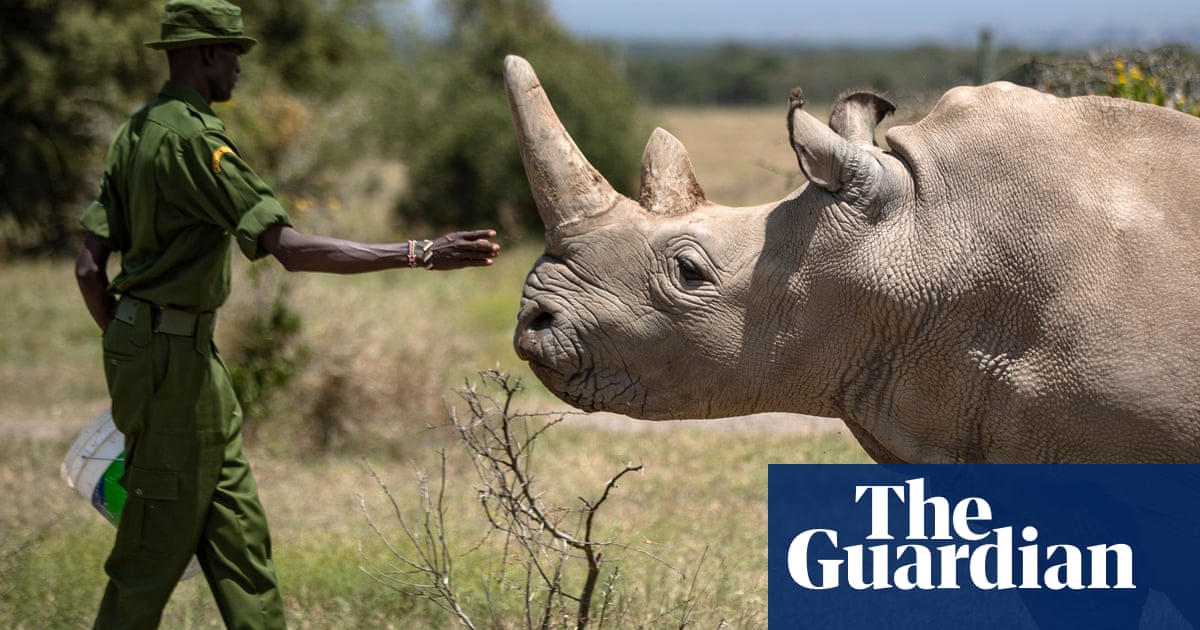
“The birth of white rhino calves is extremely exciting news,” says Peter Fearnhead, CEO of African Parks. It is the news the conservation organisation hoped for after it completed the largest ever single translocation of white rhino in November 2021. Thirty white rhinos were transported 2,100 miles from Phinda private game reserve in South Africa to Akagera national park in eastern Rwanda in a 40-hour journey completed by truck and Boeing 747.
Classified as “near threatened” by the IUCN, numbers of white rhino are declining across Africa, mainly because of poaching. The recent arrival of numerous babies in Akagera suggests the mission to create a new rhino haven is on track. “Translocation can be stressful for animals,” says Fearnhead. “Once babies start being born, it’s a sign the animals have settled well and are starting the process of building up numbers.”
Wildlife translocations are used to reintroduce a species to a location where they have gone locally extinct, to strengthen an existing population, or, as with Akagera’s white rhinos, to create a new population in a place they never existed before, often as part of wider rewilding efforts to restore an ecosystem. “Something right happening today to fix a wrong of yesterday,” as Fearnhead puts it.
The process is challenging, expensive and often dangerous. In July 2022, African Parks completed the ambitious move of 263 elephants, 80 buffalo, 128 impala, 33 sable, 81 warthog and 109 waterbuck from Malawi’s Liwonde national park to the country’s Kasungu national park. But it was later reported that two local people were killed by elephants during the translocation, and a third was killed by an elephant in September. “Any fatality that results from a translocation or ongoing management of a protected area is always one person too many,” says Fearnhead.
Translocations have helped revive Malawi’s national parks. In 2021, 14 African wild dogs completed a 27-hour journey from South Africa and Mozambique to Liwonde national park and Majete wildlife reserve. Majete received six wild dogs, which gave birth to eight pups this year. But in Liwonde, 18 wild dogs, including all the new arrivals, were killed in November after hunters poisoned a small watering hole to collect dead birds or small mammals, which the wild dogs then drank from. “When you have had such a big effort to undertake a complex reintroduction of a key species, one that’s highly endangered, it’s a huge blow to the whole team,” says Fearnhead.
Such “extremely unlucky” events are difficult to plan for. But animal fatalities are a possibility in many translocations. In 2018, six black rhino were moved from South Africa to Zakouma national park in Chad. Four of the animals died after being released. “The plants in Zakouma had a lower nutrient load, so the animals lost condition and became susceptible to diseases,” Fearnhead says.
In 2023, African Parks expects to transport four more black rhino to Zakouma in phase two of creating a breeding population. “We’ve got to be prepared to face further losses, as that’s an inherent risk with any translocation,” says Fearnhead. “There are things we’ve learned from the previous translocation where we can do things differently, including the time of year of the reintroduction. We hope, as a result of that, the prospects of the animals’ survival is greater.”
Daniel Blumstein, professor of biology at the Department of Ecology and Evolutionary Biology at the University of California Los Angeles, who co-authored a paper on translocations, says: “Unfortunately, many translocations fail, often because animals find themselves in unfamiliar habitat and have to figure out where shelter, food and safe locations are, or because of predation.
“Good planning can help improve outcomes. People can provide food and shelter for newly released animals, give them opportunities to learn the immediate area by releasing them into a safe enclosure first, or provide various forms of prerelease training. All these interventions are costly, and sometimes it’s not known whether a translocation will work until you try it. It’s often an essential management tool. But preventing the need for them in the first place is certainly preferable.”
In July, four spotted hyena were delivered from Karingani game reserve to Gorongosa national park in Mozambique, the latest in two decades’ of wildlife translocations that have included buffalo, wildebeest, elephants, hippos, cheetahs, elands, leopards and wild dogs, designed to bring Gorongosa back to life after the civil war.
“More than 102,000 animals were counted during the Gorongosa national park 2022 aerial wildlife count, compared with an estimated 19,500 animals in 2007,” says Dr Marc Stalmans, director of scientific services at Gorongosa. “All species, excluding the recent leopards and hyena, have recorded births. With ungulates, we’re already seeing births from the fourth or fifth generation since introduction, hence the strong growth in numbers. Relatively small introductions can make a big difference.”
November also saw four west African giraffe transported 500 miles from Niger’s “giraffe zone” to Gadabedji biosphere reserve in a joint project between the Giraffe Conservation Foundation (GCF) and Niger’s environment ministry. “West African giraffe have recovered from only 49 individuals in the mid-1990s to about 600 today,” says Stephanie Fennessy, executive director of GCF. “Until 2018, all these giraffe lived in the giraffe zone, a communal area that starts 60km east of the capital Niamey. This was a precarious all-eggs-in-one-basket scenario.”
Security was a major issue during the translocation. “Due to recent incursions by Boko Haram, working in Niger has become very difficult,” says Fennessy. “As a result, it was a government mandate to have a security detail allocated to the operation, including rangers, police and military. This put restrictions on activities and transport.”
The four recently moved females joined eight west African giraffe previously reintroduced to the reserve in 2018. “We’re happy to report three giraffe calves were born in Gadabedji in the last few months following the initial move,” says Fennessy.
This year also saw an ambitious intercontinental translocation of eight cheetahs from Namibia to India, where they had been absent for 75 years, having been hunted to extinction.
Elsewhere, European bison were released into ancient woodland in Kent this summer, leading to the first known bison to be born in the wild in the UK for thousands of years. Rewilding Europe has seen cinereous vultures, bison, and fallow deer released into southern Bulgaria’s Rhodope Mountains, Sorraia horses returned to Portugal’s Greater Côa Valley and lynx released into Croatia’s Velebit Mountains.
Next year is expected to be another busy one for translocations. African Parks plans to reintroduce white rhino into Garamba national park in the Democratic Republic of the Congo, and is looking at restoring addax and scimitar-horned oryx in Chad. There is also a plan with the Giraffe Conservation Foundation to bring at least 10 Angolan giraffe from Namibia to Iona national park in southern Angola.
Panthera is hoping to return lions to Batéké national park in Gabon, where the big cats were considered locally extinct until a lone male was spotted in 2014. And the Aspinall Foundation’s widely criticised plan to move 13 elephants from Howletts wild animal park in Kent to a life in the wild in Kenya may yet come to fruition. “Preparations continue,” according to the charity.
Birdlife will also get a boost from a planned 93-mile, cross-border translocation of 15 to 20 rheas (an ostrich-like bird) from Argentina to Patagonia national park in Chile, a collaboration between Rewilding Chile and Rewilding Argentina.
“Translocations are a fundamental tool in the current situation of such great degradation that nature has lost the ability to recover on its own,” says Sebastian Di Martino, conservation director at Rewilding Argentina. “We must help it to do so.”












